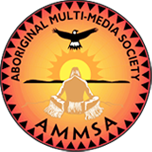Article Origin
Volume
Issue
Year
An initiative of the Alberta Centre for Active Living that enables First Nations communities to carry out exercise programs for their seniors is proving to be a valuable addition to services offered.
The Home Support Exercise Program is a physical activity intervention program based on prevention and maintenance and is aimed at older adults who are receiving home-care services. First Nations communities apply to be a partner in the program, and once established, a trained home health aide goes through a program with a client then on-going social support is provided.
Lesley Mcewan, who is contracted with the ACAL for presentation and facilitation, said seniors then conduct the exercises in their home. There is no cost to the seniors.
“It’s a program that was identified as a high need for older adults, although that’s not to suggest that it’s of higher need for any other population,” she said. “A nurse or community health representative comes to us for the training by health practitioners and then goes back to the home community to carry it on. The program has been disseminated across the province.”
ACAL piloted HSEP in several health regions with good success but when it was first planned for delivery to Aboriginal communities, changes were made to make it more culturally appropriate and meet the needs of First Nations older adults. Training began in the fall of 2005 with home care staff commuting, or in some cases, through videoconferencing.
As with all seniors, older members of Aboriginal communities should keep active, said Mcewan.
“It has been identified as a need and for its huge benefits to the clients. It helps them maintain the mobility that they currently enjoy, and teaches them fall prevention strategies,” she said.
An individualized program is designed for people with specific conditions, such as diabetes, which is running rampant in Aboriginal populations. Staying active helps to avoid other problems such as heart disease, eases symptoms and slows progress of current diseases, and builds muscle strength, flexibility and balance.
According to the World Health Organization, sedentary living, or physical inactivity, is the greatest health risk for older adults.
“Our lifestyles today are far different from our ancestors and there’s also the feeling that they’ve worked hard all their lives and deserve to rest and relax now,” said Mcewan. “But there are so many benefits of exercise including living a long and healthy life.”
Today’s modern technology and conveniences have made everyone’s life much easier and sitting for much of the day, whether it’s sitting in the car, at a computer, or watching television, is the norm. Thirty minutes of exercise is required each day.
“If you don’t use it you lose it,” she said. “Activity provides continued independence, and that’s something everyone wants,” said Mcewan.
- 1845 views
